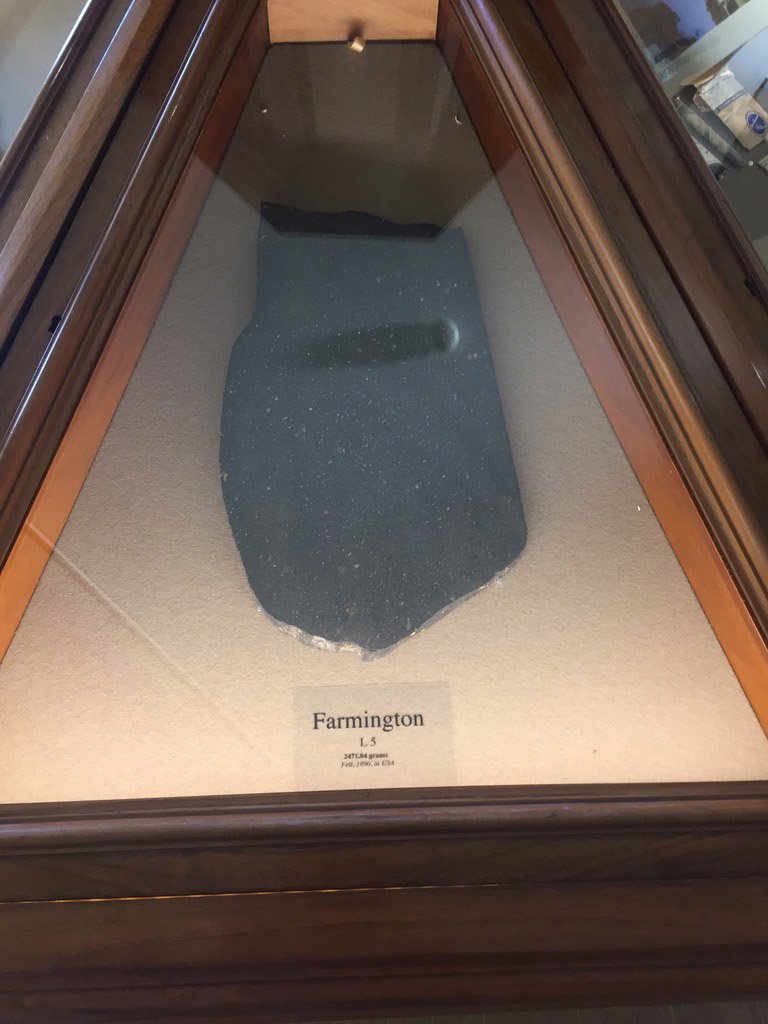
Section 3 – Stony Meteorite, Farmington

Farmington L5, 2.4 kg. This is an unusually large example of a stony meteorite, an “ordinary chondrite,” seen to fall in Washington County, Kansas, on June 25, 1890. In this polished slab one can see flecks of metallic iron which would have turned into rust in just a few years if the piece had remained in the ground instead of being collected soon after its fall.
Ordinary chondrites like this one come from very primitive parent bodies that, unlike large planets, did not separate into a dense metal core and rocky crust. Instead, metal and rock are intermixed and held together by a matrix of tiny dust grains. The name “chondrite” refers to the presence of chondrules, which are small glassy spheres that formed in the early solar system from molten silicates. This rock is 4.56 billion years old.
Note also that the rock itself is jet black. This is not due to any particularly dark mineral component of the rock, but rather the result of violent impacts that this sample experienced while in its parent body in the asteroid belt. The shock of these collisions shattered much of that metallic iron into tiny bits a billionth of a millimeter across, just the right size to absorb light and so turn the rock black. This sample was part of the Mauroy collection donated to the Specola in 1935.
